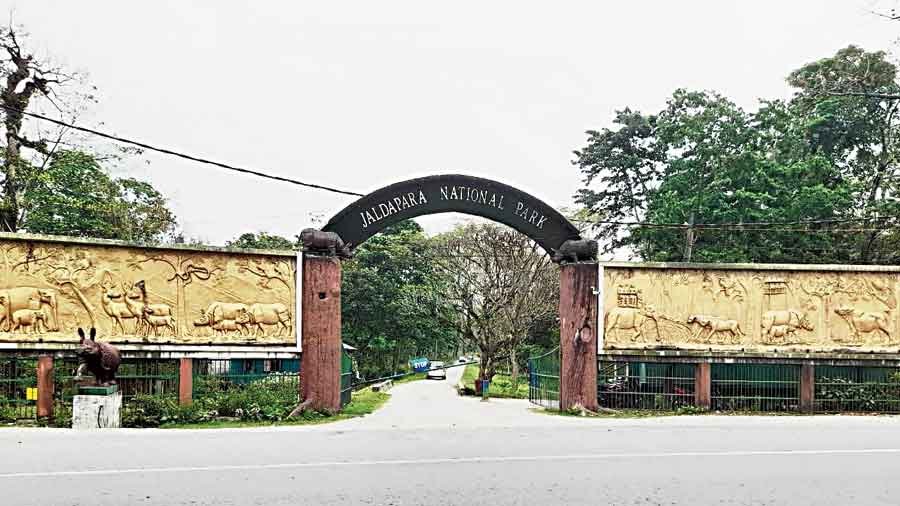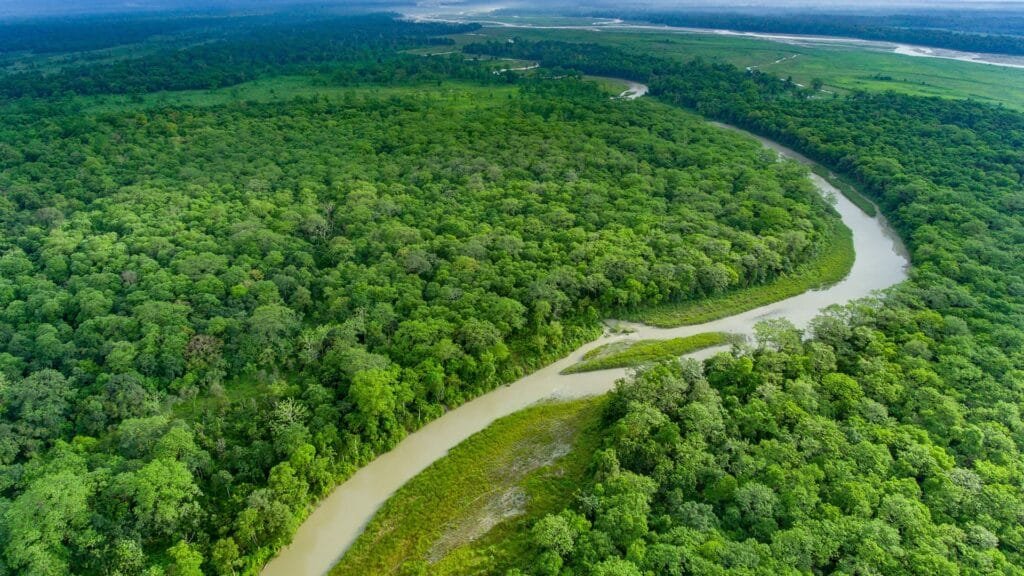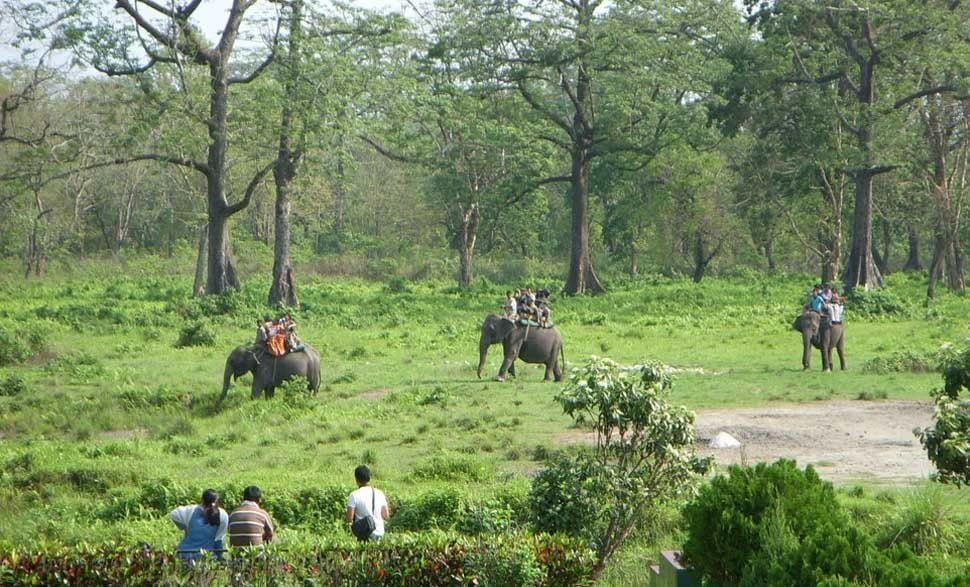Situated in the lush green landscapes of the Dooars region in West Bengal, Jaldapara National Park is a haven for wildlife enthusiasts and nature lovers. Famed for its one-horned rhinoceros, dense forests, and thrilling elephant safaris, this national park attracts thousands of travelers every year. Whether you are looking for a weekend getaway or a serene escapade into the wild, Jaldapara offers an unforgettable experience.
Jaldapara National Park is located at the foothills of the Eastern Himalayas in the Alipurduar District of West Bengal. Spanning over 200 square kilometers, this protected area was initially established as a wildlife sanctuary in 1941. It was later declared a national park to conserve its diverse flora and fauna.

Key attractions include:
- The Great Indian One-Horned Rhinoceros: One of the largest rhino populations in India outside Kaziranga.
- Rich Birdlife: A paradise for birdwatchers with numerous species of hornbills, parrots, and peafowl.
- Other Wildlife: Wild elephants, tigers, leopards, deer, and bison roam its grasslands and forests.
Why Visit Jaldapara in the Dooars?
The Dooars region is known for its scenic beauty, sprawling tea gardens, and lush forests. Here’s why Jaldapara stands out:
- Thrilling Wildlife Safaris: The elephant safari and jeep safari in Jaldapara National Park are prime highlights. Experiencing the grasslands and spotting animals up-close is an adventure of a lifetime.
- Bird Watching: From migratory waterfowl to colorful hornbills, Jaldapara offers incredible birdwatching opportunities.
- Proximity to Other Attractions: The park is close to other notable destinations like Gorumara National Park, Chapramari Wildlife Sanctuary, and Buxa Tiger Reserve, making it easy to plan a comprehensive wildlife tour of the region.
- Cultural Experience: The Dooars region is home to diverse ethnic communities, offering a chance to explore local traditions, cuisine, and folk performances.
Best Time to Visit Jaldapara
- October to May: This period is generally considered the best time to visit Jaldapara. The weather remains pleasant, and the probability of spotting wildlife increases as animals venture out in search of water.
- Monsoon Season (June to September): The park remains closed during peak monsoon due to heavy rainfall and flooding in certain areas. Roads may also become inaccessible.
How to Reach Jaldapara
- By Air: The nearest airport is Bagdogra Airport (around 140 km away). From there, you can hire a taxi or take a pre-booked cab to reach Jaldapara.
- By Rail: The nearest railway station is Madarihat, located just outside the park. Alternatively, you can reach New Jalpaiguri (NJP) and then take a taxi or bus.
- By Road: Well-connected by roads, Jaldapara can be accessed via Siliguri. State transport buses and private vehicles often ply this route, making road travel easy and economical.
Things to Do in Jaldapara
a) Elephant Safari in Jaldapara
The elephant safari is the most sought-after experience in Jaldapara. Trained mahouts take you through dense grasslands, enhancing your chances of spotting rhinos, wild elephants, and even the elusive tiger. These safaris typically occur early in the morning, so booking in advance is crucial.
b) Jeep Safari in Jaldapara
For those who prefer comfort and speed, the jeep safari is another great way to explore the park. This thrilling ride takes you through different zones where you can witness the flora and fauna of Jaldapara in their natural habitat. Booking your jeep safari beforehand is advisable, especially during peak travel seasons.
c) Nature Walks & Birdwatching
Apart from organized safaris, many nature enthusiasts enjoy guided nature walks around the periphery of the park. The Dooars region is home to numerous bird species, making birdwatching a popular activity. Carry a pair of binoculars for the best sightings!
d) Visit Nearby Attractions
- Gorumara National Park: Renowned for its population of one-horned rhinoceros and elephant herds.
- Chapramari Wildlife Sanctuary: A birdwatcher’s paradise with a variety of species of hornbills, egrets, and storks.
- Buxa Tiger Reserve: Known for its tigers, leopards, and diverse butterfly species.
- Cooch Behar Palace: For a cultural detour, this heritage site showcases the royal legacy of the region.

Places to Stay Near Jaldapara
A variety of accommodation options are available near Jaldapara National Park, catering to different budgets and preferences:
- Forest Rest Houses: For a rustic experience, you can stay at the government-run forest rest houses located close to the safari points.
- Eco-Resorts: Many private eco-resorts offer comfortable amenities and immersive nature experiences.
- Budget Hotels & Homestays: If you’re traveling on a tight budget, several homestays and hotels near Madarihat and Lataguri provide affordable yet cozy lodging.
When choosing a place to stay, consider the proximity to the park entrance, as early morning safaris require minimal travel time to the safari boarding points.
Travel Tips for Jaldapara
- Advance Bookings: Safaris, forest rest houses, and resorts often fill up quickly during peak seasons (October to May). Book your accommodations and safari permits in advance to avoid last-minute hassles.
- Carry Essentials: Binoculars, a good camera (for wildlife photography), comfortable walking shoes, and insect repellents are must-haves for a trip to Jaldapara.
- Respect Wildlife: Maintain silence during safaris and adhere to park regulations. Avoid littering and keep a safe distance from the animals.
- Local Cuisine: Don’t miss out on trying local delicacies at nearby restaurants. Momos, thukpa, and traditional Bengali dishes are widely available around the Dooars region.
- Cash & Connectivity: While Madarihat has ATMs, it’s wise to carry enough cash. Mobile network connectivity can be patchy inside the park.

Exploring the Dooars Beyond Jaldapara
Jaldapara is often the starting point for an extended Dooars tour, which can include:
- Exploring Tea Gardens: Experience the lush tea gardens and learn about tea processing in the region.
- Visiting Samsing & Suntalekhola: These scenic spots offer peaceful retreats amidst green valleys and small streams.
- River Rafting & Camping: Adventure activities like rafting are available on the Teesta and Murti rivers.
The Dooars region indeed lives up to its name—“Dooars” meaning “doorways”—as it opens the door to some of India’s most spectacular natural wonders.
From the majestic one-horned rhinoceros to the vibrant birdlife and the thrill of jeep and elephant safaris, Jaldapara in Dooars promises an enriching wildlife experience. Whether you’re a photographer aiming to capture stunning shots of flora and fauna, a nature enthusiast wanting to escape city life, or a curious traveler exploring West Bengal tourism, Jaldapara National Park caters to all. Plan your trip during the cooler months for the best sightings, secure your safari bookings early, and immerse yourself in the enchanting wilderness that Jaldapara has to offer.
Embark on this wildlife adventure and return with cherished memories and a deeper appreciation for India’s rich biodiversity. If you’re looking to extend your vacation, consider exploring the nearby Gorumara, Chapramari, and Buxa reserves for a complete Dooars travel experience. Happy traveling!
